
Friday, 1st October 2010
Making a return journey into the Mesa Verde National Park, we were met at Cliff Palace by the National Parks guide. After an interesting tour we moved on to Balcony House where a number of steep ladders and a tunnel had to be navigated to complete the tour. We enjoyed a picnic lunch near the Chapin Mesa Museum before heading down to Spruce House on our way along the Petroglyph Point Trail. This turned out to be a really good walk along the side of the canyon with the route undulating and exposed at times.
About 1,400 years ago, long before any European exploration of the New World,
a group of Indians living in the Four Corners region chose Mesa Verde for their
home. For over 700 years their descendants lived and flourished here, eventually
building elaborate stone cities in the sheltered recesses of the canyon walls.
Then in the late 1200's, within the span of one or two generations, they
abandoned their homes and moved away.
We call these people the Anasazi, from a Navajo word meaning "the ancient ones."
Ever since local cowboys discovered the cliff dwellings a century ago,
archaeologists have been trying to understand the life of these people. But
despite decades of excavation, analysis, classification, and comparison our
knowledge is still sketchy. We will never know the whole story of their
existence, for they left no written records and much that was important in their
lives has perished. Yet for all their silence, these ruins speak with a certain
eloquence. They tell of a people adept at building, artistic in their crafts,
and skilful at wresting a living from a difficult land. They are evidence of a
society that over the centuries accumulated skills and traditions and passed
them on from one generation to another. By classic times (A.D. 100 to 1300) the
Anasazi of Mesa Verde were the heirs of a vigorous civilization, with
accomplishments in community living and the arts that rank among the finest
expressions of human culture in ancient America.
Taking advantage of nature, the Anasazi built their dwellings under the
overhanging cliffs. Their basic construction material was sandstone, which they
shaped into rectangular blocks about the size of a loaf of bread. The mortar
between the blocks was a mix of mud and water. Rooms averaged about six feet by
eight, space enough for two or three people. Isolated rooms in the rear and on
the upper levels were generally used for storing crops.

An early morning experiment outside the hotel . . .
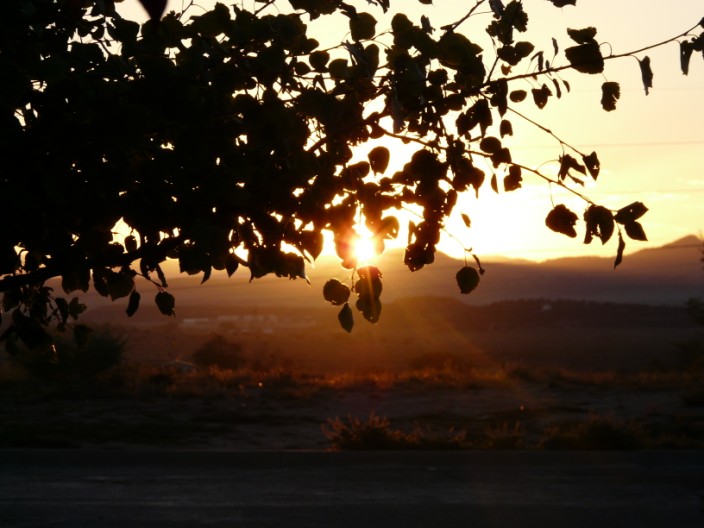
and a colourful sunrise
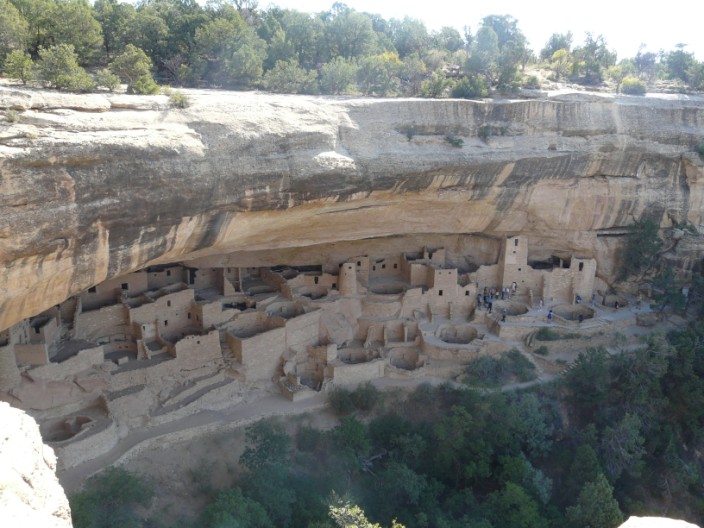
Cliff Palace from the lookout . . .
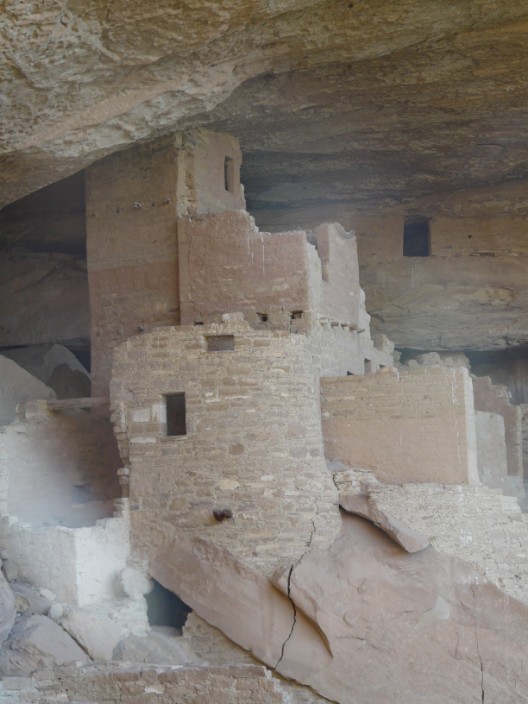
and there are some major cracks!

Storage seems to have been high up . . .

while the living areas were lower down

Barry has found something of interest . . .

I wonder if he saw these 'lego bricks'
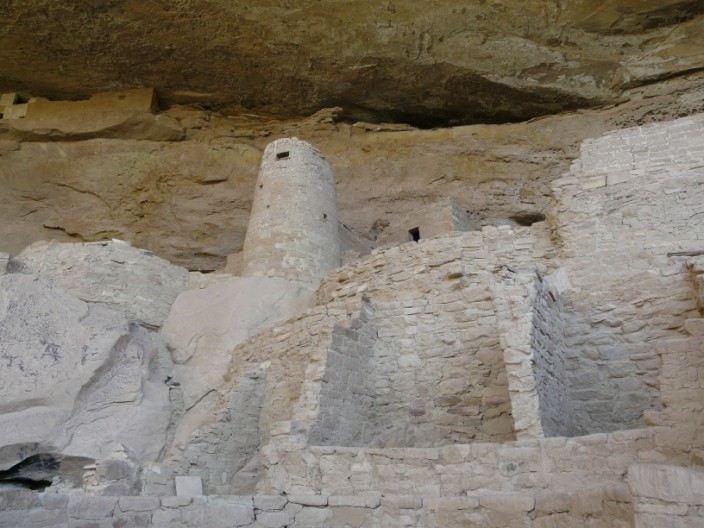
The whole structure . . .

is quite amazing

A kiva has a ventilation shaft, a deflector, a central fire, benches around the side and a ladder to gain access through the roof

Some had alcoves - perhaps for storage

The warden gave us lots of information
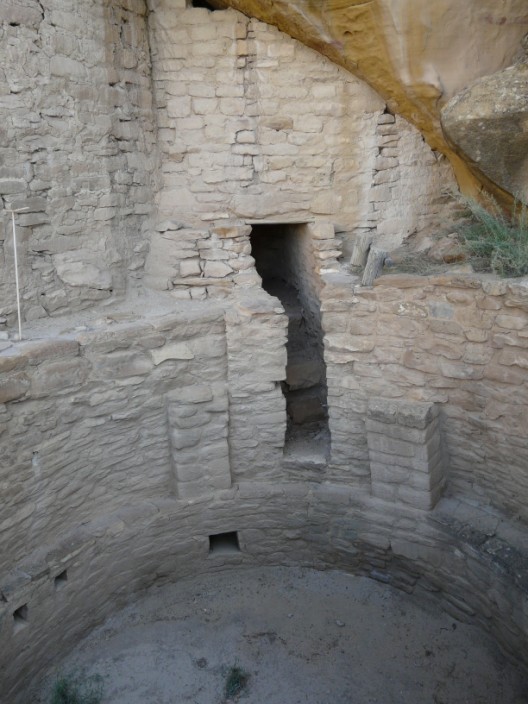
but didn't mention the alcoves

The exit is through a narrow gap

Balcony House takes a little more effort to gain access . . .

up the double ladder . . .

quite a long way

to get to the top . . .
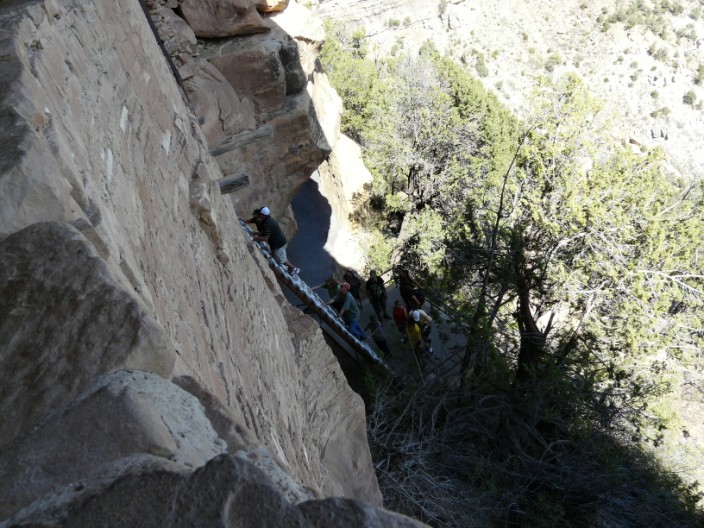
giving time for lots of photos
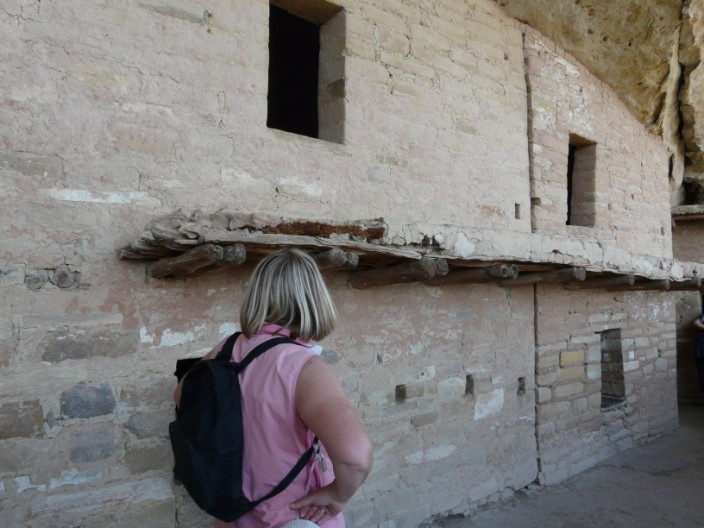
Is this the balcony the house is named after?

The inhabitants would have had a great view

Smaller than Cliff Palace, but just as impressive . . .

with a double story large kiva

The walls were built to accommodate the rock face

For grinding corn, but I can't remember what they were called - any offers?

The exit is by way of . . .
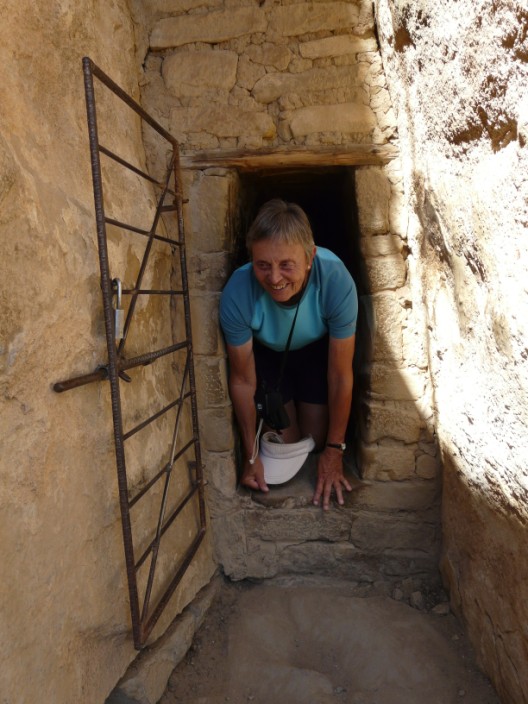
a narrow tunnel . . .
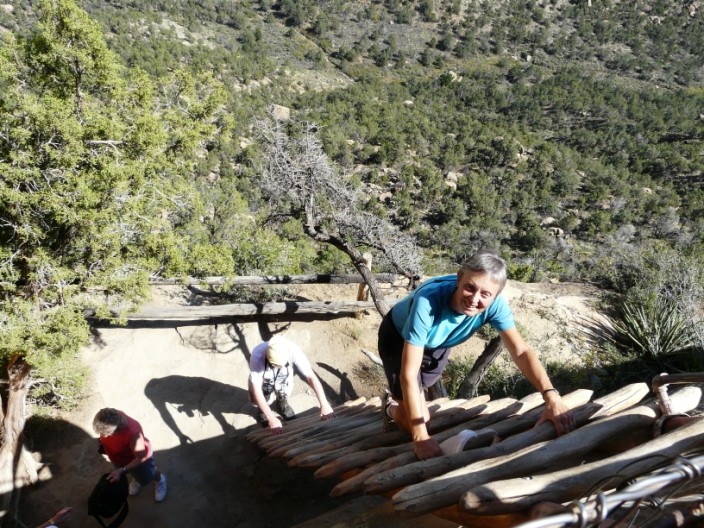
and more ladders . . .

and another view of the valley . . .

from the top
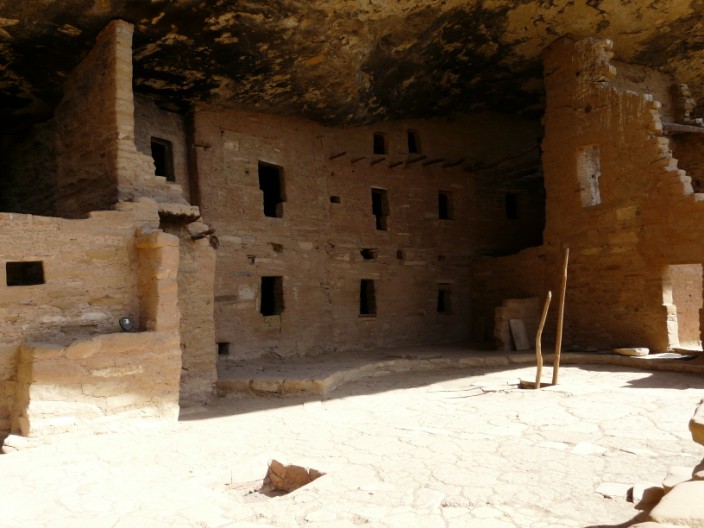
Another chance to visit a cliff dwelling - at Spruce House . . .

where the ladder leads down into a kiva . . .

which Jan . . .
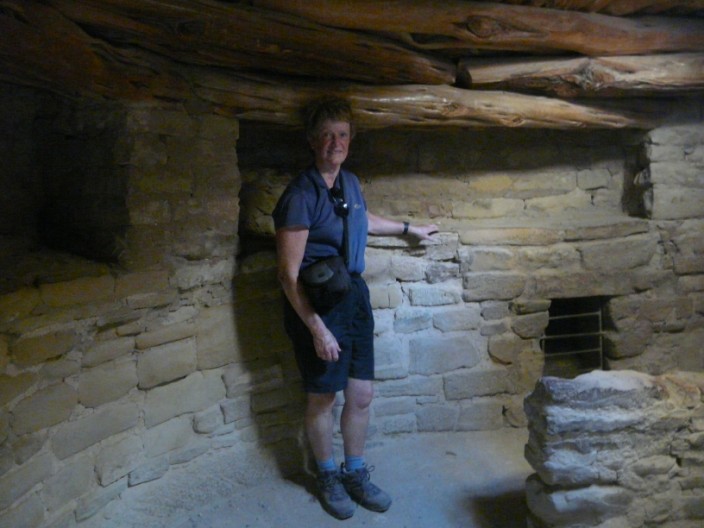
and I decide to explore . . .

and when no-one is using the ladders - - - -
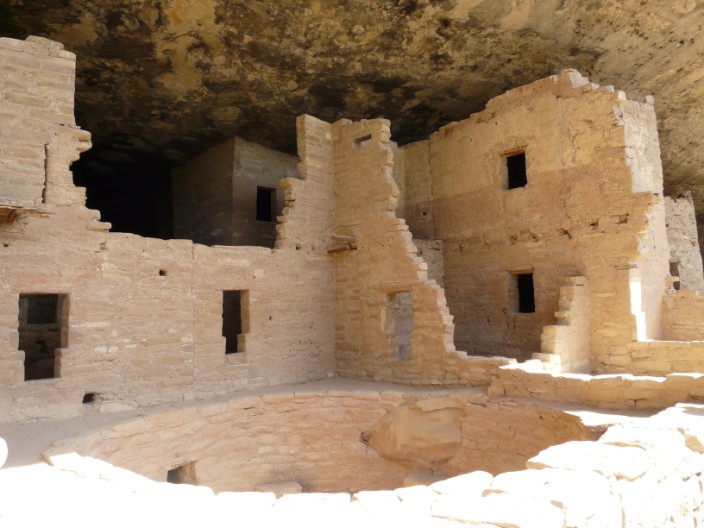
More buildings . . .

to explore . . .

but before long . . .

it is time to continue on our walk . . .

past a Douglas Fir, or two . . .

as we make our way along . . .

the side of the cliff . . .

and past another Douglas Fir

The ridges are where tools would have been sharpened . . .
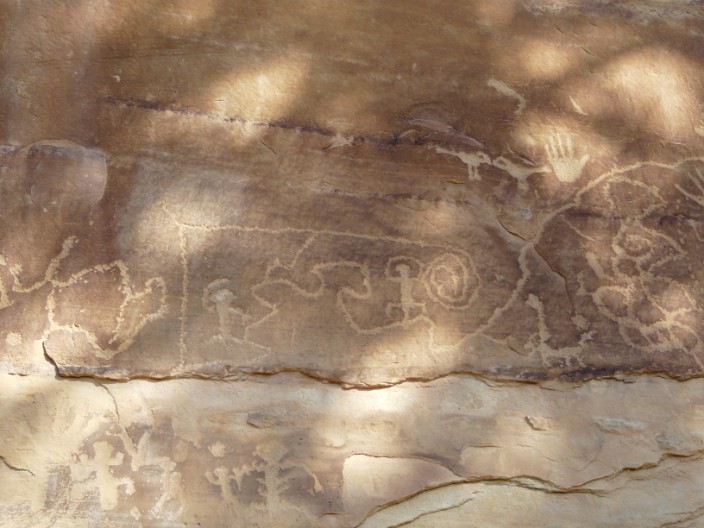
perhaps to help . . .

when making the petroglyphs

Finally climbing out of the valley . . .
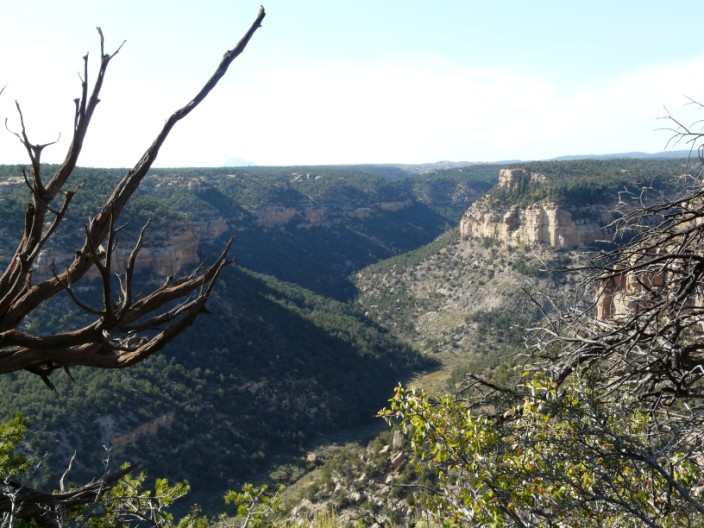
it is time for a look back . . .

and some steps on our path can just be seen bottom left